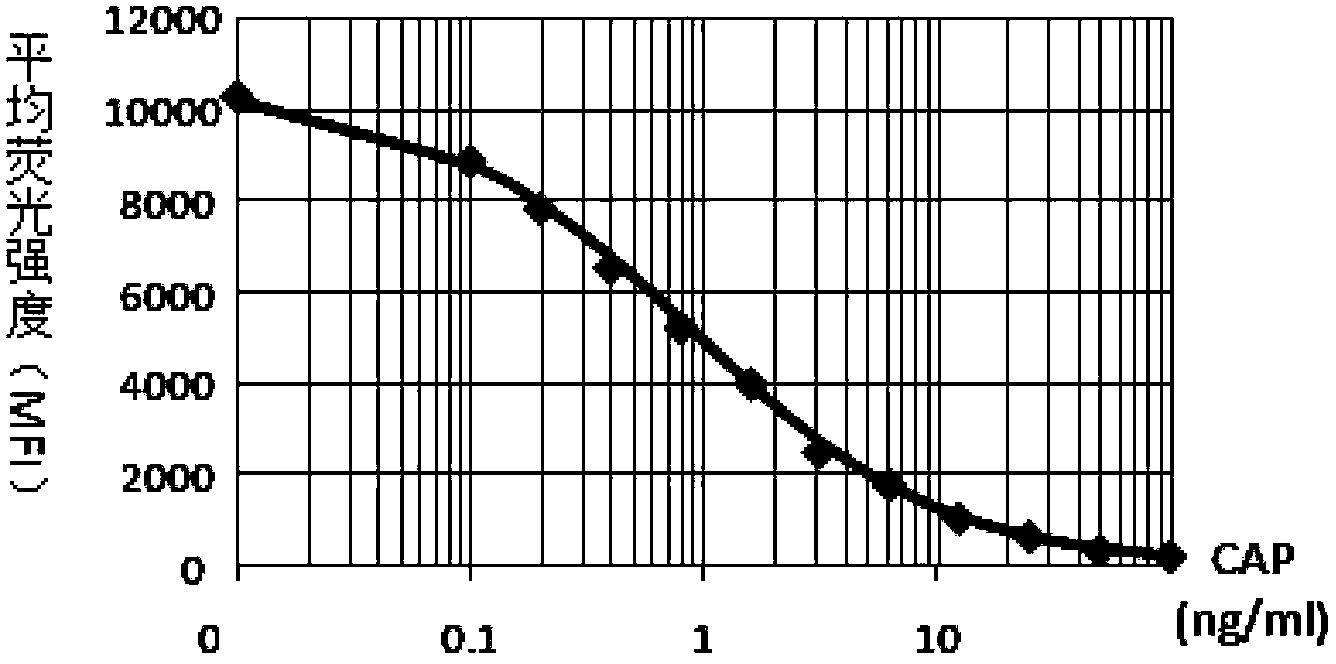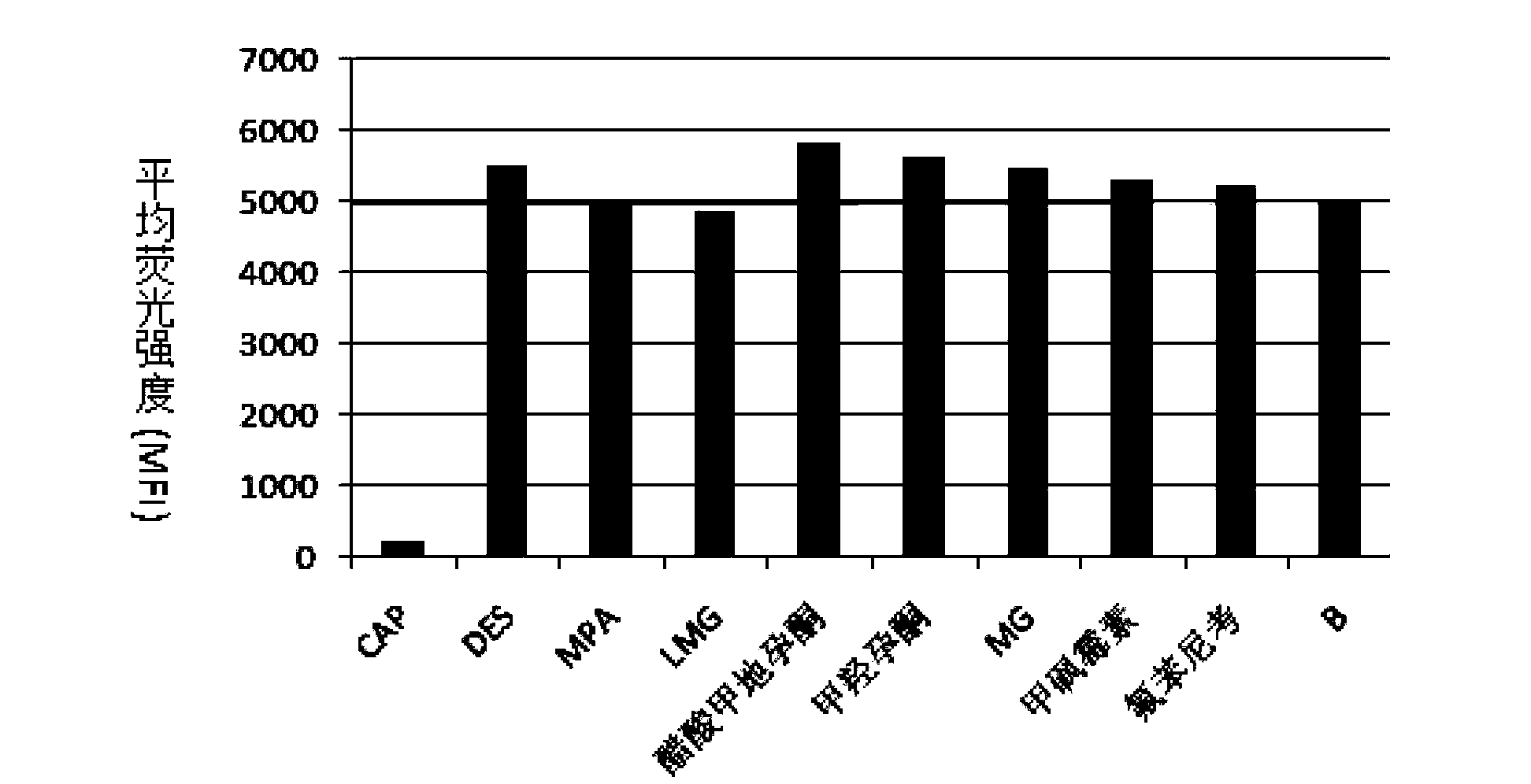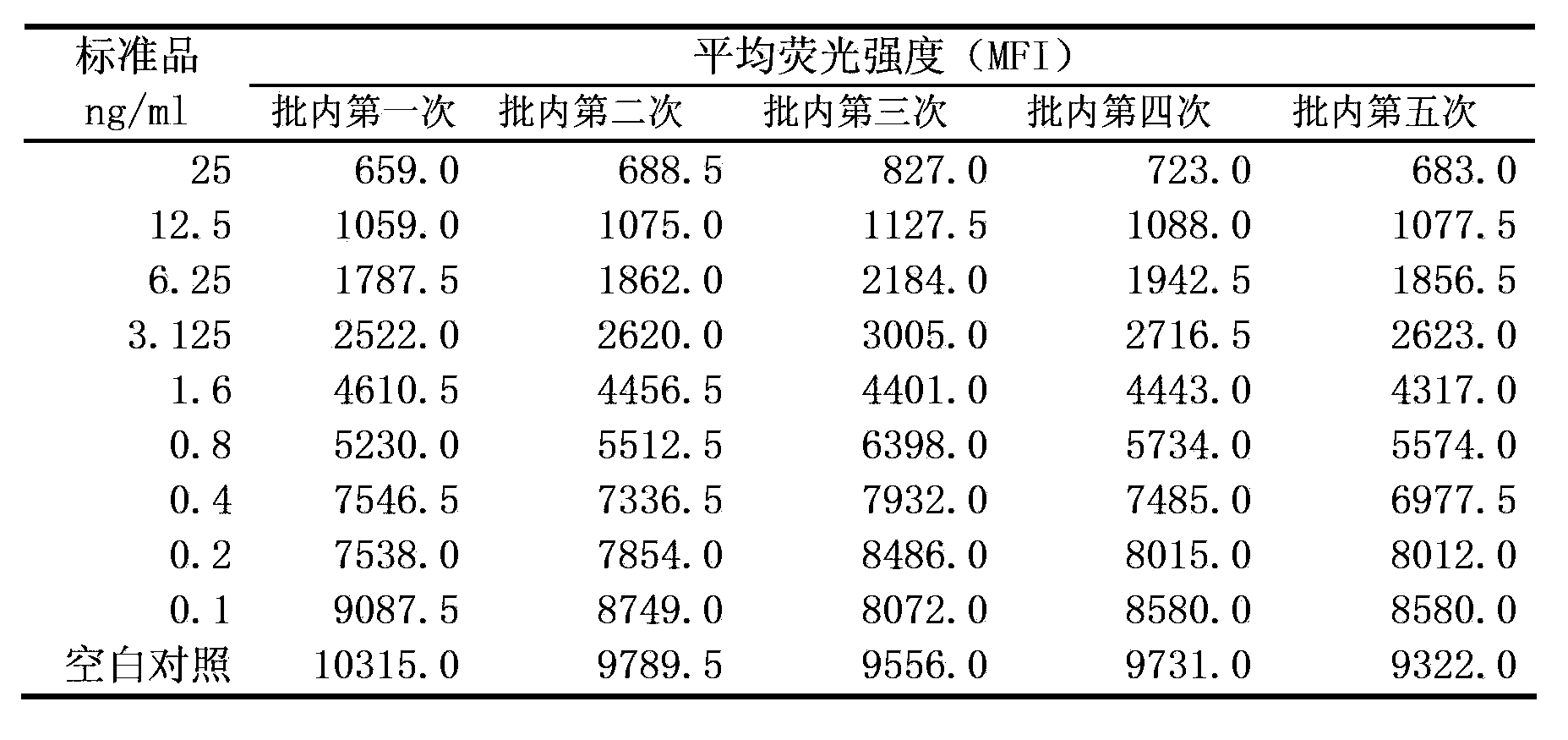Liquid-phase chip method for detecting chloromycetin in aquatic product
A liquid phase chip detection and chloramphenicol technology, applied in the field of bioengineering, can solve the problems of single, time-consuming and high cost of veterinary drug residue detection, and achieve the effects of convenient clinical sampling and analysis, good repeatability and low cost
- Summary
- Abstract
- Description
- Claims
- Application Information
AI Technical Summary
Problems solved by technology
Method used
Image
Examples
Embodiment 1
[0047] Embodiment 1 prepares chloramphenicol artificial antigen
[0048] Chloramphenicol was coupled with ovalbumin to form an artificial antigen.
Embodiment 2
[0049] Preparation and purification of embodiment 2 chloramphenicol monoclonal antibody
[0050] The hapten succinylchloramphenicol containing the shuttle group is coupled to the carrier protein (OVA) by the active ester method, the hapten containing the aromatic amino group is coupled to the carrier protein by the diazotization method, and the antigen is emulsified. Four BALB / C mice were taken, and blood was taken from the orbit before immunization as negative serum. For the first immunization, CAP-OVA was emulsified with an equal volume of complete Freund's adjuvant and injected intraperitoneally at a dose of 100 μ / mouse; 2 weeks later, CAP-OVA After mixing with Freund's incomplete adjuvant, they were immunized again; after that, boosted immunization once every other week, and then incomplete Freund's adjuvant was injected sequentially in the tail vein. Three days before the fusion, booster immunization was performed once, and the mice were slowly and directly injected with ...
Embodiment 3
[0051] Example 3 Biotinylation of Chloramphenicol-specific Monoclonal Antibody
[0052] Take 1 mg of chloramphenicol monoclonal antibody and dissolve it with 45 μL of 10 mM Sulfo-NHS-Biotin. Stir the reaction for 4-5 hours at room temperature to fully biotinylate the antibody. Then pass through YM-10 column with 0.1mol / L, PBS of pH7.4, replace the buffer solution and remove unreacted small molecule BNHS. Aliquot various biotinylated antibodies in aliquots and store in a freezer at -20°C.
PUM
 Login to View More
Login to View More Abstract
Description
Claims
Application Information
 Login to View More
Login to View More - R&D
- Intellectual Property
- Life Sciences
- Materials
- Tech Scout
- Unparalleled Data Quality
- Higher Quality Content
- 60% Fewer Hallucinations
Browse by: Latest US Patents, China's latest patents, Technical Efficacy Thesaurus, Application Domain, Technology Topic, Popular Technical Reports.
© 2025 PatSnap. All rights reserved.Legal|Privacy policy|Modern Slavery Act Transparency Statement|Sitemap|About US| Contact US: help@patsnap.com



